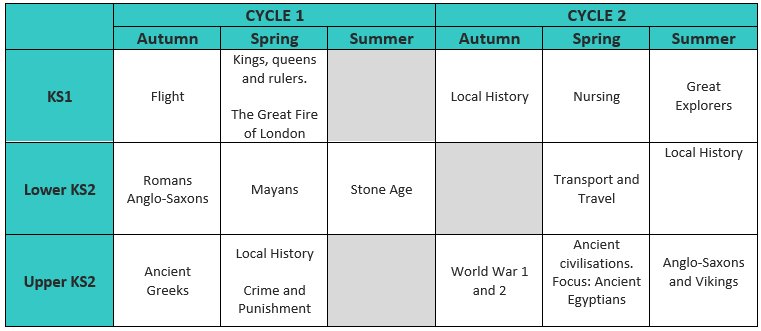History
Intent
At Ashmead school, we want our historians to develop an appreciation and deep understanding of the past and wider world around them. We encourage pupils to be curious and think critically about the past, as well as make meaningful links to the present day, considering how history has shaped their own lives and has the potential to shape the future. Through exposure to a range of sources, our pupils have the opportunity to evaluate, analyse evidence, ask questions and develop perspective through a range of contexts within local history, British History and world History. They will also be able to explain key concepts enabling pupils to make connections within their learning. We want our pupils to understand the complexity of people’s lives, diversity, and the process of change. Pupils will be inspired to know more about the past and to have the skills required to explore their own interests.
Implementation
Our curriculum is organised into a progression model, with the long-term overview identifying the skills, types of knowledge, concepts to be taught in a sequentially coherent way. Our progression documents consider the rationale and impact of prior and future learning.
In Early Years, historical learning begins in ‘Understanding the World’ where children begin to make sense of their local surroundings, community and the wider world. By engaging with a broad selection of fiction and non-fiction texts, rhymes and poems, children learn and understand concepts such as past and present and talk about similarities and differences between people around them and their role in society. Pupils are provided with opportunities to develop their vocabulary to support learning within the area of study and beyond.
In KS1 and KS2, we operate on a 2-year cycle which builds upon the foundations taught and learnt in EYFS. Pupils in KS1, study significant individuals and events from the past, for example the Wright Brothers and The Great Fire of London. In EYFS, they will have been introduced to types of transport and London, for example, so they can draw upon prior learning. This component learning is undertaken whilst pupils also build knowledge of substantive concepts and slowly enriches their chronological schema. In KS2, pupil’s chronological frameworks are further developed at a local, national and international level.
Our curriculum overview

Our knowledge rich history curriculum is taught following our whole school long term plan and our progression document outlines where local, British and world history are studied as well as where key skills and concepts are repeated through frequent encounters in different contexts.
Key concepts have been selected to secure knowledge and give a strong foundation and deeper conceptual knowledge for learning a wide range of historical topics in a meaningful way. Key vocabulary is also identified to ensure such concepts are introduced and developed in a progressive yet age appropriate way. These include: Transport and trade, Community and Culture, Power and Hierarchy, Settlements, Conflict and Resolution, Innovation.
Disciplinary knowledge enables pupils to gain knowledge about how historians investigate the past and construct historical claims through the context of the facts learned. We want pupils to study the past through different lenses and learn about the different fields of historical inquiry.
- Historical Enquiry - asking questions, using sources and evidence to construct and challenge the past, and communicating ideas.
- Cause and consequence - selecting and combining information that might be deemed a cause and shaping it into a coherent causal explanation and understanding the relationship between an event and other future events.
- Change and continuity - analysing the pace, nature and extent of change.
- Similarity and difference - analysing the extent and type of difference between people, groups, experiences or places in the same historical period.
- Historical significance - understanding how and why historical events, trends and individuals are thought of as being important.
- Historical interpretations - understanding how and why different accounts of the past are constructed.
Key questions have been designed to support historical enquiry and reflect the focused key concepts (substantive and disciplinary) for the period of history being studied. For example, questions aim to consider impact so that historical significance and interpretation is not left to pupils forming their own interpretations. Questions aim to focus teachers planning and pupils’ responses on how historians learn and communicate about ideas and past societies.
Chronological knowledge is reinforced using a school history timeline which is displayed in all classrooms to support pupils’ retrieval of prior knowledge, draw comparisons and make connections across different periods of history.
Planning, teaching and learning is supported by experiences, visits, artefacts, fiction and non-fiction texts and use of resources such as those recommended by the Historical Association to make learning memorable. Classroom environments provide scaffolding and stimuli for pupils through tier three subject specific vocabulary, key facts and questions reflecting the subject being learnt.
Once key knowledge and skills has been learned, our curriculum enables pupils to draw upon the importance of cross curriculum learning, e.g. geographical features, scientific phenomena or religious beliefs, when studying history. Again, this supports pupils to connect materials into broader frameworks and narratives.
Impact
Our historians will be confident and able to talk about what they have learnt in history using subject specific vocabulary. Pupil voice will demonstrate that pupils enjoy history and are able to recall their learning over time. Pupils work demonstrates that history is taught at an age appropriate standard across each year group with opportunities planned in for pupils of all backgrounds, abilities and dispositions. Work is of good quality and demonstrates pupils are acquiring knowledge, skills and vocabulary in an appropriate sequence.







